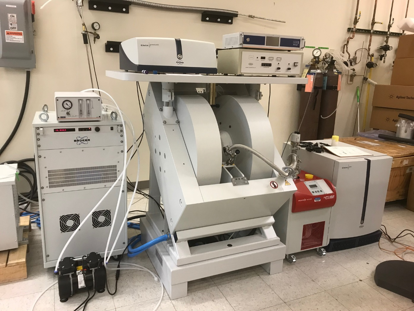
The use of registered names, trademarks, etc. Product Liability: The publisher can give no guarantee for all the information contained in this book. All rights are reserved, whether the whole or part of the material is concerned, specifically those of translation, reprinting, re-use of illustrations, broadcasting, reproduction by photocopying machines or similar means, and storage in data banks. Weber Bruker BioSpin Corporation Billerica, MA, USA Eaton University of Denver Department of Chemistry & Biochemistry Denver, CO, USAĭr. Wen X, Enokizo A, Hattori H, Kobayashi S, Murata M, Homma S (2005) J Agric Food Chem 53:2684–2689Īkagawa M.Gareth R. Montavon P, Duruz E, Rumo G, Pratz G (2003) J Agric Food Chem 51:2328–2334 Montavon P, Mauron A-F, Duruz E (2003) J Agric Food Chem 51:2335–2343 Hofmann T, Bors W, Stettmaier K (1999) J Agric Food Chem 47:391–396 Singleton VL, Orthofer R, Lamucia-Raventos RM (1999) Methods Enzymol 299:152–178 Rösch D, Bergmann M, Knorr D, Kroh LW (2003) J Agric Food Chem 51:4233–4239 Behrs Verlag, Hamburg, Schnellmethoden zur Beurteilung von Lebensmitteln und ihren Rohstoffen Müller J, Rösch D, Kroh LW (2004) Elektronenspinresonanzspektroskopie. Goodman BA, Glidewell SM, Deighton N, Morrice AE (1994) Food Chem 51:399–403
#Power sweep bruker epr free
Gonis J, Hewitt DG, Troup G, Hutton DR, Hunter CR (1995) Free Radic Res 23:393–399 Nicoli MC, Anese M, Manzocco L, Lerici CR (1997) Lebensm Wiss u Technol 30:292–298ĭelgado-Andrade C, Morales FJ (2005) J Agric Food Chem 53:1403–1407 Sánchez-González I, Jiménez-Escrig A, Saura-Calixto F (2005) Food Chem 90:133–139 Richelle M, Tavazzi I, Offord E (2001) J Agric Food Chem 49:3438–3442 Steinhart H, Luger A, Piost J (2001) Proceedings of 19th International Scientific Colloquium on Coffee, Trieste 14.-Īnese M, Nicoli MC (2003) J Agric Food Chem 51:942–946 Investigations with model systems showed that among all coffee constituents the carbohydrates are mainly responsible for the formation of oxygen scavenging substances.ĭaglia M, Papetti A, Gregotti C, Bertè F, Gazzani G (2000) J Agric Food Chem 48:1449–1454īorelli CR, Visconti A, Mennella C, Anese M, Fogliano V (2002) J Agric Food Chem 50:6527–6533Ĭharurin P, Ames JM, Del Castillo MD (2002) J Agric Food Chem 50:3751–3756ĭel Castillo MD, Ames JM, Gordon MH (2002) J Agric Food Chem 50:3698–3703

The higher roasted sample is less vulnerable than medium or light roasted coffee.

Additional antioxidant capacity of coffee melanoidins seems to be strongly influenced by atmospheric oxygen. The content of chlorogenic acids increased significantly at higher storage temperatures, probably caused by a release from polymer structures. During storage experiments of coffees brews changes in antioxidant action are found to be time dependent. Thus the contribution of both main antioxidant active compounds (polyphenols, melanoidins) whose ratio varies with roasting conditions could be estimated. For the determination of antioxidant activity of Maillard reaction products in coffee, TEMPO appears to be the better radical marker. Depending on which stabilized radical is used, Fremy's salt (potassium nitrosodisulphonate) or 2,2,6,6-tetramethyl-1-piperidin-1-oxyl (TEMPO) values can differ significantly. The total antioxidant activity of coffee beverages was measured with stabilized radical EPR spectroscopy.


 0 kommentar(er)
0 kommentar(er)
